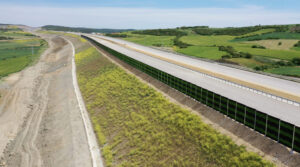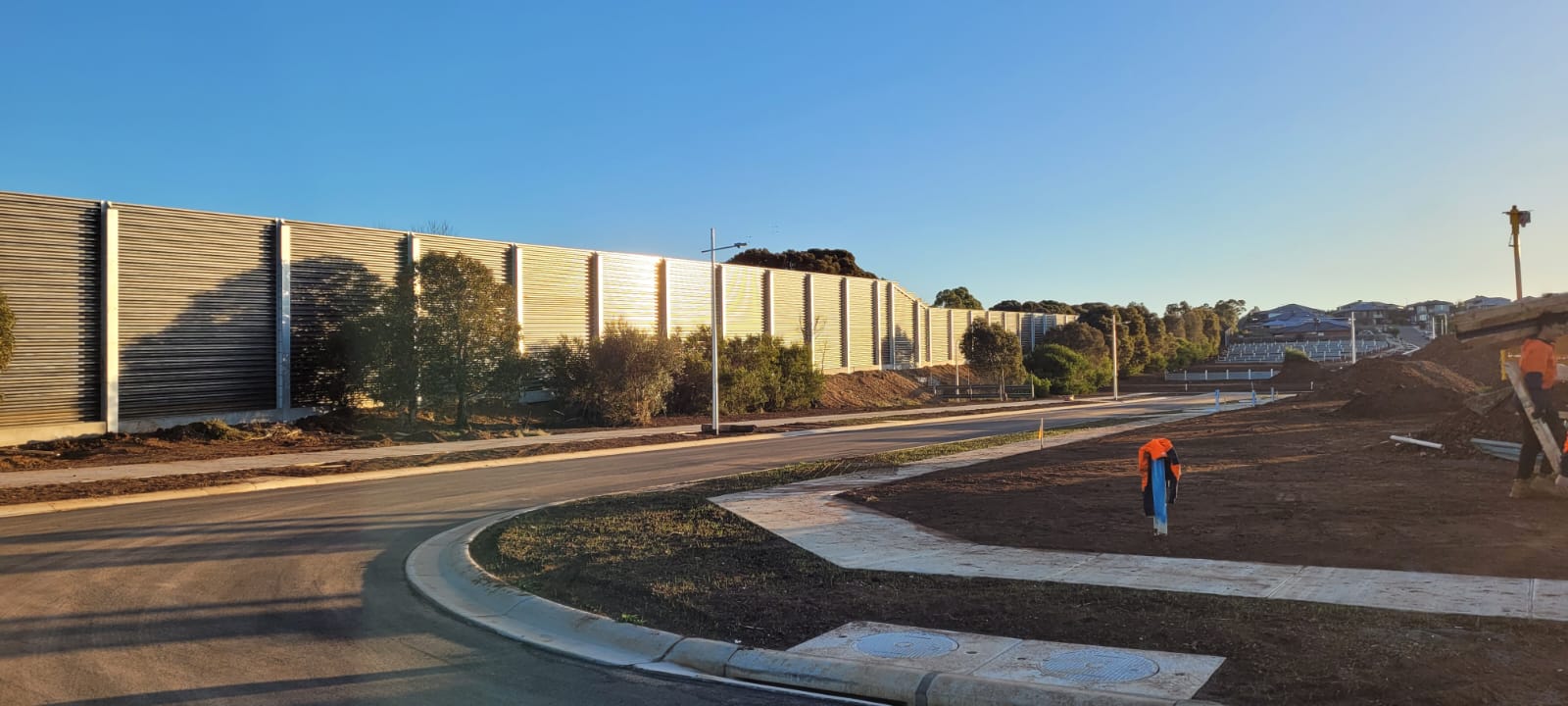Where there’s traffic, there’s noise. And highways never stop moving.
That’s part of what keeps the country running – freight, commuters, logistics, long-haul trips. But when that constant movement pushes up against homes, schools, or public spaces, the noise doesn’t just fade into the background. It becomes a problem.
Noise barriers – when done right – are one of the most effective tools for managing that sound without disrupting road function or nearby communities. But not all noise barriers are built to handle highway conditions.
Why highways need serious noise control
On major roads and freeways, there’s no buffer zone. Vehicles are moving fast, often in high volumes, and the noise they generate – engines, tyres, braking, and general rumble – carries far beyond the roadside.
This isn’t like suburban street traffic. Highways run through residential developments, near schools and parks, and sometimes parallel critical infrastructure like rail or utilities. In some areas, homes back directly onto the freeway. In others, planned expansions bring new roads closer to existing communities.
Noise in this environment doesn’t just cause annoyance – it can lead to health impacts, stress, and local complaints in nearby communities.
How noise barriers help along major roads
In highway projects, noise barriers serve a clear and critical role. They:
- Protect residential areas close to expanding road corridors from constant traffic noise
- Reduce environmental noise impact near schools, playgrounds, and hospitals
- Control acoustic spill into parks, pedestrian areas, and shared-use zones
- Help meet EPA and local authority guidelines on transport noise exposure
- Build trust with local communities during civil infrastructure upgrades
Noise barriers along highways aren’t just functional – they shape how people experience the nearby environment. Done right, they improve residential livability and prevent passing traffic from becoming a headache – literally.
What makes a good highway noise barrier?
Along a highway, the best noise solutions tick multiple boxes:
- Acoustic function: It needs to meet specific decibel reduction targets, often based on council or EPA guidelines.
- Visual integration: The wall should look great amongst the surrounding architecture, branding, or streetscape aesthetics.
- Speed and practicality: Highway builds shouldn’t take forever. The barrier needs to go in cleanly, with minimal long-term disruption to traffic.
- Structural durability: Wind loads, vehicle turbulence, and roadside conditions demand high-performance materials.
- Low-maintenance materials: Remote stretches can’t be repainted or repaired every few months. The finish needs to last.
That’s why pre-engineered noise barrier systems are increasingly used along busy roads. They meet regulatory standards, speed up install, and give project teams flexibility on finishes, layout and alignment.
Reflect or absorb? Here’s what works on highways
Most highway noise barriers fall into two categories: reflective or absorptive.
Reflective barriers bounce noise back toward the source. That can be effective when there’s room for the sound to disperse, such as wide medians or open rural corridors.
But in more sensitive areas like residential fringes or noise-sensitive zones – absorptive barriers offer better performance. They soak up the sound rather than bouncing it back across lanes or into buildings.
Which one works better? It depends on the area and your requirements. Wallmark can talk you through your options and tailor a solution for your unique needs.
Project Spotlight: Recycled Rubber Noise Wall, Northern Ring Highway
Along the Northern Ring Highway, a 2km recycled rubber noise wall was installed to cut traffic noise and reduce tyre waste – a project fittingly named The Noise Barrier Project.
Led by motorway operator ICA in partnership with Hatko, the wall was built using 135 tonnes of old vehicle tyres collected directly from the highway itself. The result: a durable, low-maintenance barrier that effectively protects nearby homes and habitats from road noise.
Designed with a turf-like aesthetic, the barrier blends into the landscape and has one of the lowest carbon footprints of any noise wall on the market. It’s also earned both a Zero Waste Certificate and an Environmental Product Declaration, making it a win for acoustic performance and sustainability.
Wallmark is proud to lead the way in bringing recycled rubber noise walls to Australian road projects. Read more about the Northern Ring Highway project.
Sound control is now part of highway design
Today, noise walls are baked into the early stages of road planning, and for good reason. They help major infrastructure projects hit environmental targets, secure community support, and future-proof new corridors for growth.
At Wallmark, we work closely with civil contractors, project managers, and acoustic consultants to engineer noise solutions that meet the demands of complex road and freeway developments.
The key is using systems that are built for the complex noise requirements of busy highways. And as the Northern Ring Highway project shows, it’s possible to integrate a barrier so well, it feels like it was always meant to be there.
Get in touch with Wallmark to discuss how we can tailor a noise pollution remedy to fit your site.










You must be logged in to post a comment.